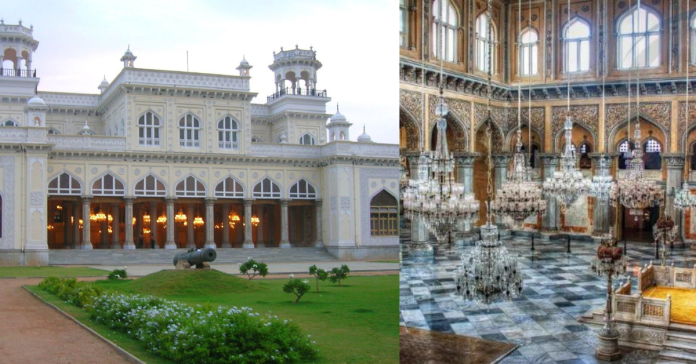Chowmahalla Palace
Chowmahalla Palace, once the official residence of the Nizams, is a stunning example of Persian, Indo-Saracenic, Rajasthani, and European architectural styles. The palace complex, which dates back to the 18th century, is renowned for its elegant courtyards, grand halls, and intricately carved arches. In March 2010, it was declared as a UNESCO World Heritage Site. It’s spread across 12 acres of courtyards, gardens, palaces, and fountains.

1751-1769
The construction of Chowmahalla Palace began around 1751 AD under Nawab Salabath Jung, the third son of Asaf Jah I. When Nizam Ali Khan Asaf Jah II moved the ruling capital from Aurangabad (present-day Maharashtra) to Hyderabad in 1763, he added numerous Mahals during his reign.
1769-1912
The Chowmahalla (four palaces) are symmetrically arranged around a large water cistern, creating a grand and historically rich enclave. These buildings served various purposes, including royal living quarters, zenanas for the women, grand halls for public audiences, and administrative offices. Over the years, successive Nizams expanded and renovated the complex, adding new structures. Originally covering 45 acres, the complex now spans a more compact 12 acres. It includes the new Khilwat Mubarak, the four palaces – Afzal Mahal, Aftab Mahal, Mehtab Mahal, and Tahniyat Mahal – as well as a grand Clock Tower, the Buggy Khaana, which houses the Nizams’ splendid vehicles, and several other heritage buildings.
1912-Present
Enchanted by Persian architecture, HEH Mir Osman Ali Khan Asaf Jah VII commissioned the construction of the new Khilwat Mubarak in 1912, which was completed by 1916. Today, Chowmahalla Palace stands as a symbol of the enduring connection to its historical roots and a commitment to preserving cultural heritage for future generations. Thanks to the dedicated efforts of Princess Esra Birgen Jah, the palace has been meticulously restored and transformed into a cultural haven in Hyderabad. It holds the distinction of being the only palace in the state to receive UNESCO’s 2010 Award of Merit and has also been honored with the prestigious INTACH Heritage Award twice.
Chowmahalla palace timings:
| Category | Details |
|---|---|
| Opening Hours | 10:00 AM – 5:00 PM |
| Visiting Days | Saturday to Thursday |
| Friday is closed Photoshoot not permitted | |
| Admission Costs | |
| Adults (Foreign Tourists) | INR 400 |
| Adults (Indian Nationals) | INR 100 |
| Children (Below 10 Years) | INR 40 |
| Photography Charges | INR 50 (only mobile) |
Chowmahalla Palace Address:
20-4-236, Motigalli, Khilwat, Hyderabad, Telangana 500002
Treasures of the palace:
The Chowmahalla Palace in Hyderabad, India, stands as a testament to the opulent legacy of the Asaf Jahi dynasty. Beyond its stunning architecture, the palace boasts a treasure trove of artifacts that offer a glimpse into the lives of the Nizams, the rulers of Hyderabad. Let’s embark on a journey to explore some of the most captivating treasures housed within these historic walls:
- The Q قرآن (Quran) Gallery: This unique section showcases a rare collection of Qurans, the holy book of Islam. Dating back to the 14th century, the collection features exquisite works created by master calligraphers and craftsmen from across the Islamic world. Visitors can marvel at the intricate calligraphy styles and the evolution of Qurans over centuries.

source: chowmahalla.in
- A Feast for the Eyes: Furniture and Chandeliers: The royal residences within the palace complex are adorned with magnificent furniture, a blend of French period styles with occasional pieces reflecting Queen Anne and Queen Victoria eras. These ornately carved chairs, tables, and cabinets are complemented by breathtaking chandeliers from Turkey, Belgium, and Venice. The combination creates a visual spectacle, reflecting the refined tastes of the Nizams.
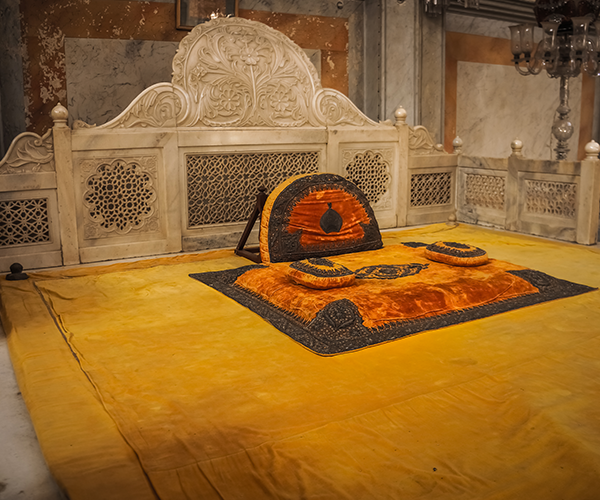
source: chowmahalla.in
- Armoury: History buffs will be enthralled by the impressive collection of weaponry displayed in the armoury. This section houses swords, daggers, shields, and even firearms used by the Nizams and their troops. The armory provides a window into the military history of Hyderabad and the weaponry used during the Asaf Jahi dynasty’s reign.

source: chowmahalla.in
- A Legacy of Knowledge: The Council Hall, once a venue for meetings with dignitaries, now houses a temporary exhibition space. This hall showcases a diverse collection of treasures, including rare manuscripts, priceless books, and historical documents. Visitors can delve into the intellectual pursuits of the Nizams and gain insights into the cultural and political landscape of the era.
- The Nizam’s Vintage Collection: Car enthusiasts can’t miss the Buggie Khaana, which houses a fascinating collection of vintage cars used by the Nizams. These meticulously maintained automobiles, ranging from stately Rolls-Royces to sleek Bentleys, offer a glimpse into the luxurious lifestyle of the Nizams.
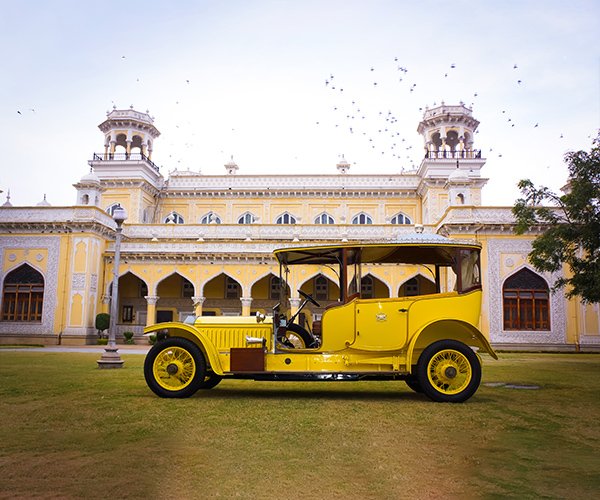
source: chowmahalla.in
Beyond these specific treasures, the very essence of the Chowmahalla Palace itself is a treasure. The architectural styles, from the Qutb Shahi to the European influences, reflect the rich cultural tapestry of Hyderabad. The intricate carvings, the expansive courtyards, and the grand halls all speak volumes about the grandeur of the Asaf Jahi dynasty.
Other buildings
The Chowmahalla Palace complex itself is comprised of several distinct buildings, each contributing to the overall grandeur of the site. Here’s a closer look at some of the other noteworthy structures beyond the main palaces:
- The Bara Imam: This translates to “Twelve Imams” and refers to a long, two-storied structure with a series of rooms on the eastern side facing a central pool and fountain. It was originally the administrative wing of the palace complex, housing various offices and departments. The Bara Imam’s architecture reflects the Mughal era with Indo-Saracenic arches and prominent turrets, creating a visually striking contrast to the neoclassical style of the main palaces.
- The Shishe-Alat: Literally meaning “Mirror Image,” the Shishe-Alat stands opposite the Bara Imam on the western side of the complex. This building, however, functioned as guest quarters for visiting dignitaries. While the overall design reflects the Bara Imam’s style, it’s believed to have been less ornately decorated.
- Roshan Bangla and Council Hall: These two structures flank the central Khilwat Mubarak, the heart of the palace complex. Legend has it that the Sixth Nizam was born on the plot where the Roshan Bangla now stands. The current structure was built and named after his mother, Roshan Begum. Symmetrically opposite the Roshan Bangla lies the Council Hall, a venue for meetings with dignitaries and officials.
- Clock Tower: This prominent structure houses the Khilwat Clock, a timepiece known for its intricate design and perfect operation even today.
In addition to these, the complex may also include other structures like:
- Craft Centers: These areas might showcase traditional Hyderabadi crafts like lacquerware, metalwork, and embroidery, providing a glimpse into the local artistic heritage.
- Gardens: Lush green spaces interspersed throughout the complex could offer a serene escape from the grandeur of the palaces.
- Water features: Fountains, pools, and possibly even water channels might add to the visual appeal of the palace grounds.
Inside Chowmahalla Complex: The Four Palaces
The Chowmahalla Palace complex, an architectural marvel, consists of four distinct palaces that reflect the grandeur and opulence of the Nizams of Hyderabad. Each palace within the complex has its own unique charm and historical significance, contributing to the overall splendor of the Chowmahalla complex. Here’s an exploration of the four palaces:
1. Afzal Mahal

source: chowmahalla.in
Afzal Mahal is one of the four main palaces within the Chowmahalla complex. This palace, named after the fifth Nizam, Afzal-ud-Daulah, is known for its elegant design and intricate architecture.
- Architectural Highlights: Afzal Mahal features grand arches, beautiful stucco work, and expansive verandahs. The interiors are adorned with ornate chandeliers, richly decorated ceilings, and elegant furniture that reflect the taste and sophistication of the Nizams.
- Significance: Afzal Mahal served as one of the main residential quarters for the Nizams and their family. It stands as a symbol of the royal lifestyle and the architectural prowess of the time.
2. Aftab Mahal

source: chowmahalla.in
Aftab Mahal, another gem within the Chowmahalla complex, was designed to impress with its grandeur and opulence.
- Architectural Highlights: The palace boasts a blend of Mughal and European architectural styles, featuring lofty ceilings, exquisite cornices, and intricately carved wooden doors. The use of marble and precious stones in its construction adds to its luxurious appeal.
- Significance: Aftab Mahal was often used for hosting important guests and dignitaries. Its grandeur and opulence made it a fitting venue for royal gatherings and state functions.
3. Mehtab Mahal
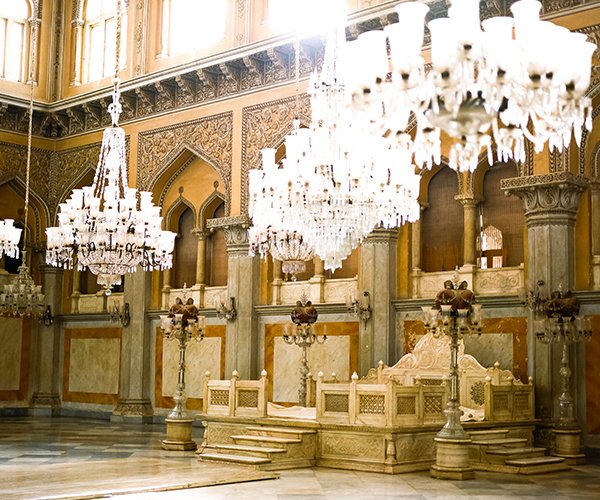
source: chowmahalla.in
Mehtab Mahal, translating to “Palace of the Moonlight,” lives up to its name with its serene and elegant design.
- Architectural Highlights: The palace is known for its delicate and graceful architectural elements, including fine stucco work, elegant columns, and beautiful lattice windows. The serene ambiance is enhanced by the palace’s strategic design and location within the complex.
- Significance: Mehtab Mahal served as a private residence for the royal family members. Its tranquil setting and exquisite design provided a peaceful retreat for the Nizams and their kin.
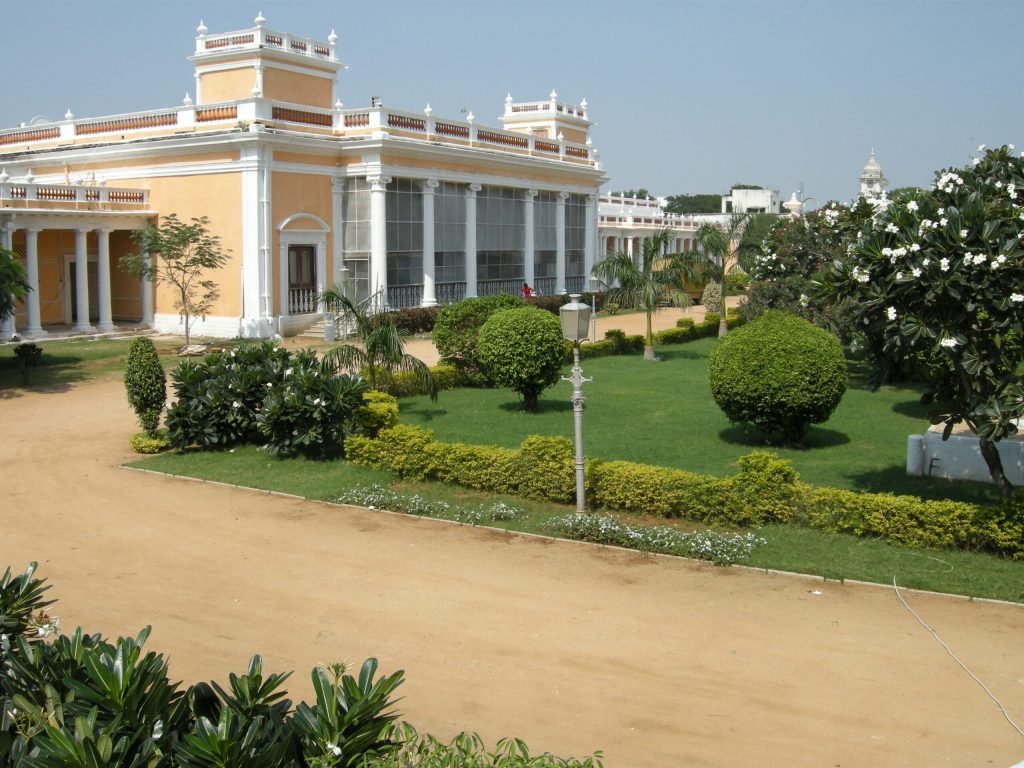
source: chowmahalla.in
4. Tahniyat Mahal

source: chowmahalla.in
Tahniyat Mahal, the last of the four main palaces, is another stunning example of the Nizams’ architectural vision and grandeur.
- Architectural Highlights: This palace features a harmonious blend of Persian and Indian architectural styles. The ornate interiors, grand halls, and spacious courtyards reflect the palace’s luxurious and regal ambiance.
- Significance: Tahniyat Mahal was used for various ceremonial and administrative purposes. Its grand halls and spacious courtyards made it an ideal location for hosting important events and royal ceremonies.
The Nizams of Hyderabad: Family Tree
The Nizams of Hyderabad, part of the Asaf Jahi dynasty, ruled one of the most prosperous princely states in India from the early 18th century until 1948. Here is an outline of the family tree of the Nizams of Hyderabad:
1. Nizam-ul-Mulk Asaf Jah I (Mir Qamar-ud-Din Khan)
- Reign: 1724-1748
- Founder of the Asaf Jahi dynasty.
2. Nizam Ali Khan Asaf Jah II (Mir Nizam Ali Khan)
- Reign: 1762-1803
- Successor of Asaf Jah I.
3. Nizam Sikander Jah Asaf Jah III (Mir Akbar Ali Khan)
- Reign: 1803-1829
- Son of Nizam Ali Khan Asaf Jah II.
4. Nizam Nasir-ud-Daula Asaf Jah IV (Mir Farqunda Ali Khan)
- Reign: 1829-1857
- Son of Nizam Sikander Jah Asaf Jah III.
5. Nizam Afzal-ud-Daula Asaf Jah V (Mir Tahniyat Ali Khan)
- Reign: 1857-1869
- Son of Nizam Nasir-ud-Daula Asaf Jah IV.
6. Nizam Mahbub Ali Khan Asaf Jah VI (Mir Mahbub Ali Khan)
- Reign: 1869-1911
- Son of Nizam Afzal-ud-Daula Asaf Jah V.
7. Nizam Osman Ali Khan Asaf Jah VII (Mir Osman Ali Khan)
- Reign: 1911-1948
- Son of Nizam Mahbub Ali Khan Asaf Jah VI.
- Last ruling Nizam; the princely state of Hyderabad was annexed to India in 1948.
Descendants of Nizam Osman Ali Khan Asaf Jah VII
- Azam Jah (Mir Himayat Ali Khan):
- Eldest son of Osman Ali Khan.
- Had two sons: Mukarram Jah and Muffakham Jah.
Mukarram Jah (Mir Barkat Ali Khan)
- Grandson of Osman Ali Khan.
- Recognized as the titular Nizam after his grandfather’s death.
- Born in 1933.
Muffakham Jah (Mir Karamat Ali Khan)
- Brother of Mukarram Jah.
- Born in 1939.
Suggested Articles:
Top 20 Best Visit Places in Monsoon( Rainy Season) in India
Gandikota: The Grand Canyon of India History, tourist places & temples 2024
Top Tourist Places in Himachal Pradesh: Your Guide to a Refreshing Summer Adventure


















